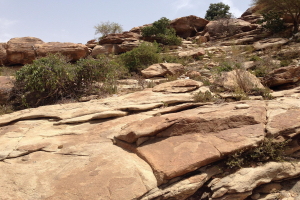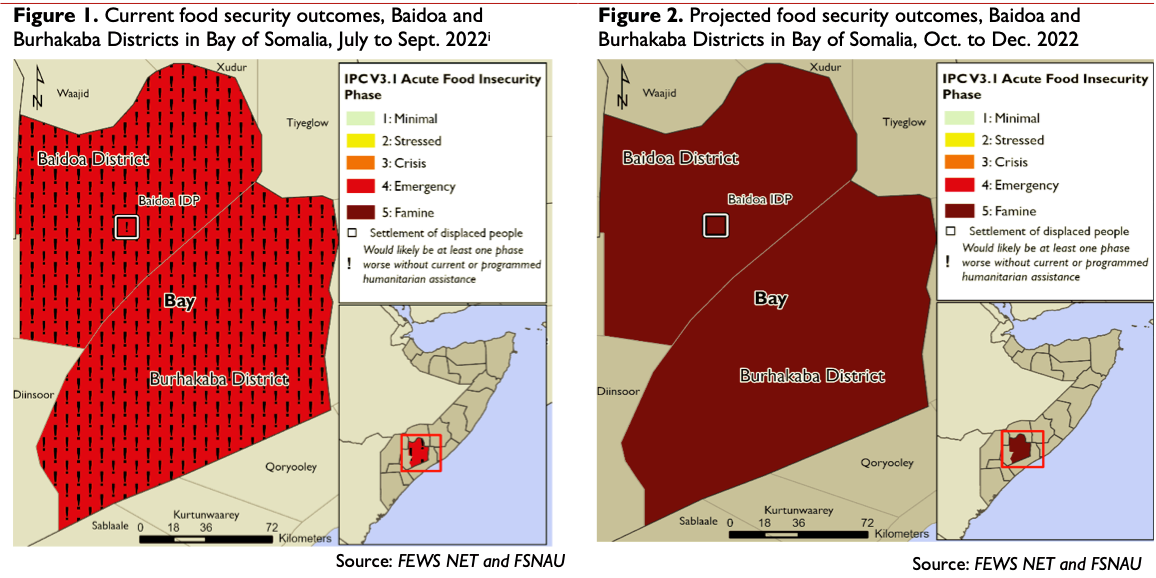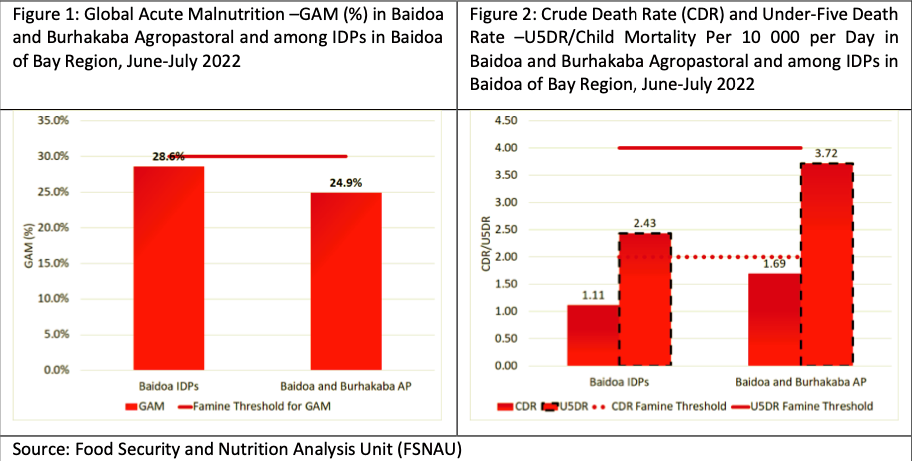
In view of projected famine, FAO calls for immediate, scaled-up assistance to devastated rural communities to avert catastrophe in Somalia
Rome: A new food security and nutrition analysis reveals that famine is unfolding in parts of Somalia, while staggering levels of suffering can be seen across the country. In response, the heads of the Inter-Agency Standing Committee (IASC), the longest-standing and highest-level humanitarian coordination forum of the United Nations system, issued a statement today (IST) calling for a huge injection of funds to enable a massive scale-up of assistance.
IASC brings together the executive heads of 18 organizations, including FAO, to formulate policy, set strategic priorities and mobilize resources in response to humanitarian crises.
The people facing famine and extreme hunger in Somalia today are overwhelmingly livestock owners and rural families. Their survival depends on the survival of their herds. Their children’s nutrition is inextricably linked to the health and productivity of their animals. Those animals have been dying at a shocking rate for the last year.
 Based on integrated food security, nutrition and mortality surveys conducted in June and July 2022 and subsequent IPC analysis, agropastoral populations in Baidoa and Burhakaba districts and displaced populations in Baidoa town of Bay Region in Somalia are projected to face Famine (IPC Phase 5) between October and December 2022 in the absence of significant humanitarian assistance reaching people most in need. This Famine projection was made by a multi-disciplinary team of technical experts working as part of the Somalia IPC Technical Working Group (IPC TWG).
Based on integrated food security, nutrition and mortality surveys conducted in June and July 2022 and subsequent IPC analysis, agropastoral populations in Baidoa and Burhakaba districts and displaced populations in Baidoa town of Bay Region in Somalia are projected to face Famine (IPC Phase 5) between October and December 2022 in the absence of significant humanitarian assistance reaching people most in need. This Famine projection was made by a multi-disciplinary team of technical experts working as part of the Somalia IPC Technical Working Group (IPC TWG).
An Integrated Food Security Phase Classication (IPC) Famine Review Committee (FRC) was activated on August 5, 2022, following a request from the IPC Somalia Technical Working Group (TWG), to review their recent analysis of three units of analysis in the Bay region (rural populations in Baidoa and Burhakaba districts, and newly arrived IDPs in Baidoa settlements).
The Food and Agriculture Organization of the United Nations (FAO) has already moved to convert its ongoing support to these rural communities into cash assistance, alongside critical livestock feed, care and water, but much more is urgently needed.
 Unprecedented levels of drought, alongside skyrocketing food prices, conflict, and COVID-19 have forced over a million people – predominantly women and girls – from their homes, their lands, their entire way of being and into camps. They face enormous protection risks in these camps and have to rely on external assistance to meet every single need – water, food, health care, shelter. The number of people in need of urgent humanitarian assistance has increased from 4.1 million at the start of 2022 to 7.1 million people between June and September 2022.
Unprecedented levels of drought, alongside skyrocketing food prices, conflict, and COVID-19 have forced over a million people – predominantly women and girls – from their homes, their lands, their entire way of being and into camps. They face enormous protection risks in these camps and have to rely on external assistance to meet every single need – water, food, health care, shelter. The number of people in need of urgent humanitarian assistance has increased from 4.1 million at the start of 2022 to 7.1 million people between June and September 2022.
Despite its critical importance to survival, livelihood support is hugely underfunded in the ongoing humanitarian response, and hard-to-reach rural people are suffering the most. Every $1 invested in protecting rural livelihoods saves around $10 in food-related assistance for displaced families. FAO reached 333 661 households between January and August this year with lifesaving cash and livelihood assistance, but the scale of assistance currently being delivered and funding from the international community is not yet sufficient to protect those most at risk.
Funding gap
FAO stated it is bringing assistance to rural areas, as closely as possible to affected communities in Somalia. This helps to keep families and communities together during a crisis, reducing psychosocial and physical risks to the vulnerable, and paving the way for a faster, future recovery. Thanks to its well-established network of local partners and implementation modalities, FAO remains the agency with the furthest reach potential and the systems in place to scale-up lifesaving assistance in hard-to-reach rural areas at risk of famine.
Key elements of FAO’s response plan include direct cash transfers and cash-for-work programmes that specifically target rural communities, alongside a range of support measures such as keeping pastoralists’ animals alive and productive by providing feed, water and veterinary care; and distributing drought-tolerant, early-maturing varieties of sorghum, maize, cowpea and other beans and vegetables to riverine families that may still be able to practice cropping despite the drought.
FAO Somalia urgently requires some $270 million to assist 1.8 million people across 52 districts with immediate lifesaving and livelihood safeguarding support. Funding levels remains drastically low, with only 23 percent of the plan funded as of August 2022.
– global bihari bureau





